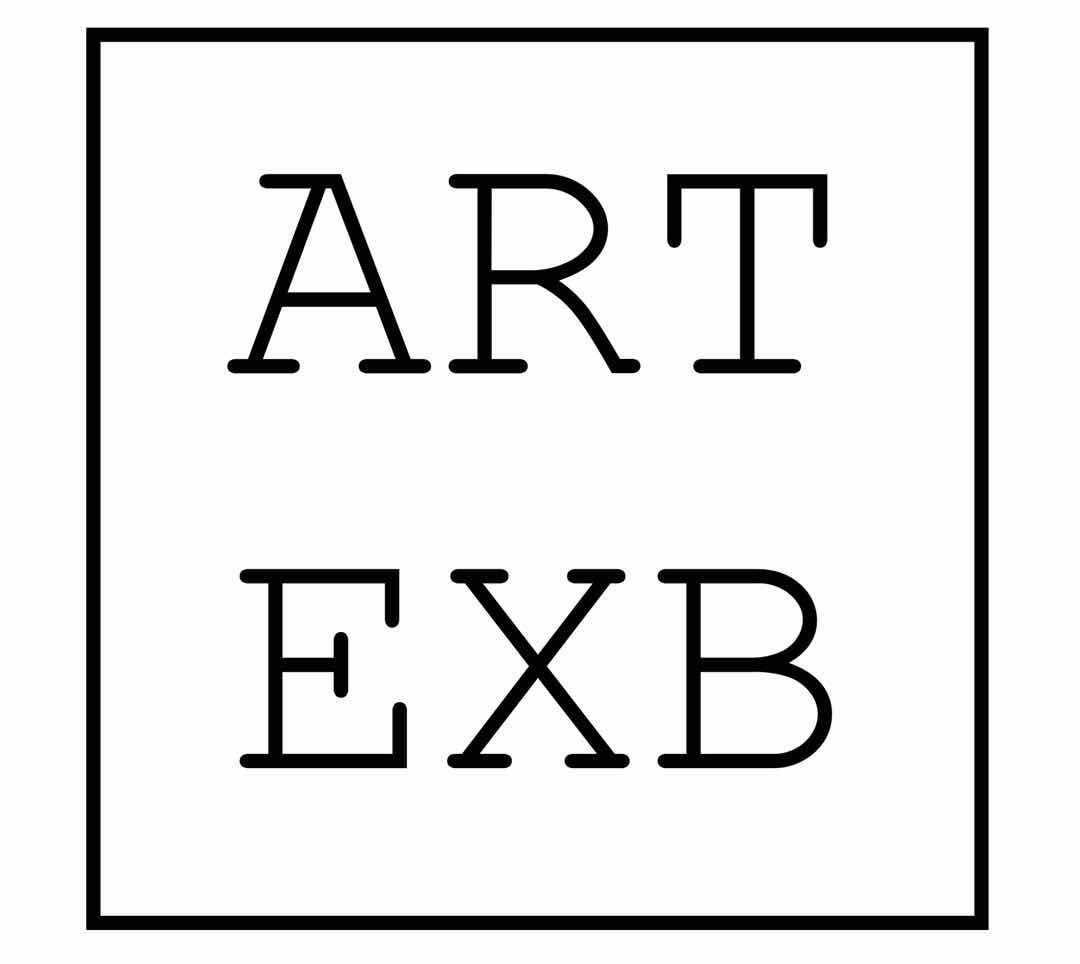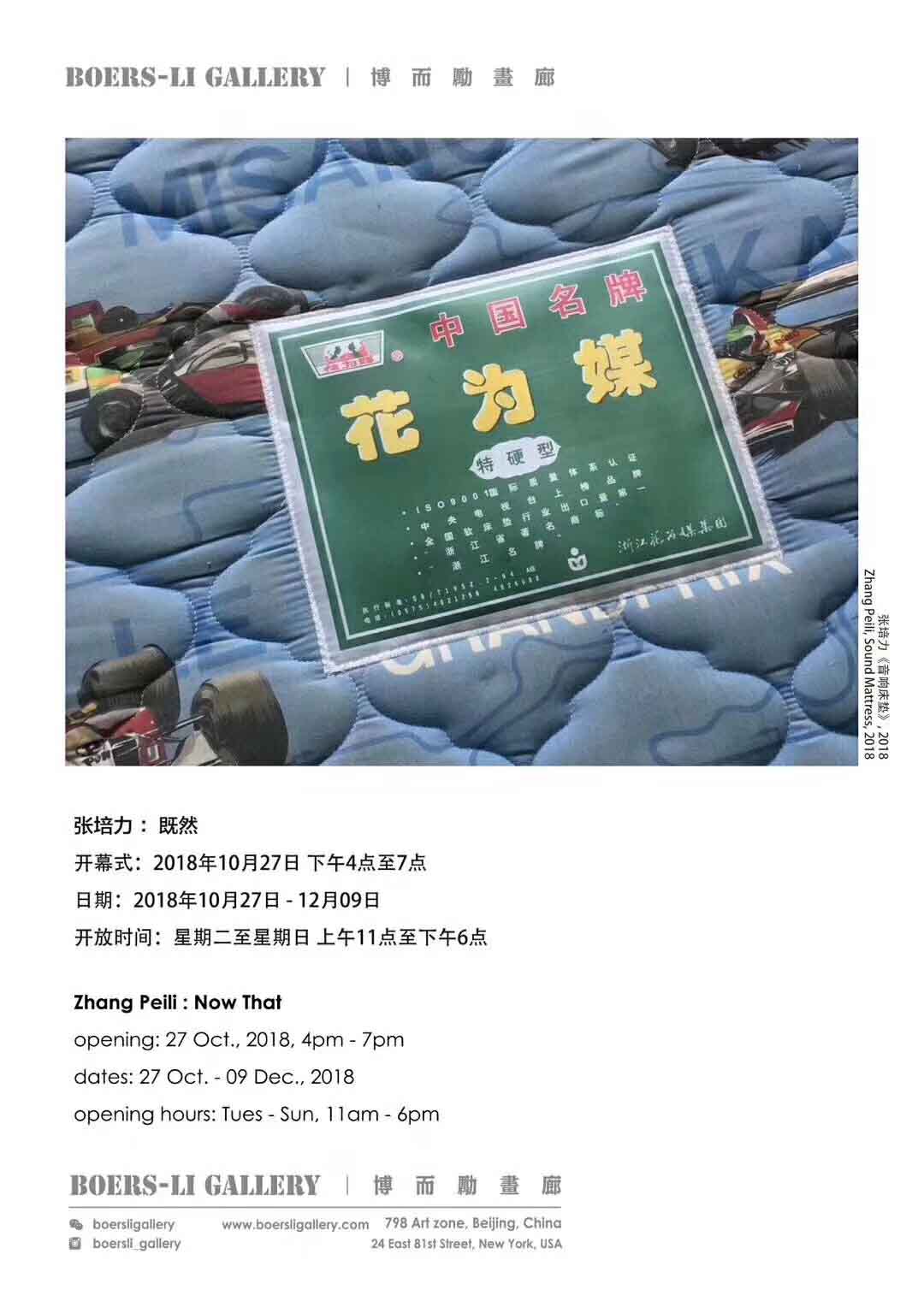马歇尔•麦克卢汉曾在其著作《媒介即信息》中颇具前瞻性地预言了媒介对个体的广泛影响。他声称:“被普遍应用并对我们从出生至死进行强制监控的电子信息设备正在我们对隐私的要求和社区管控之间引发严重的矛盾。” 这一理论至今仍具有实效性和普遍性,甚至在互联网大数据时代被进一步放大。微信作为一个多功能一体化的全能型App,目前每月拥有高达10亿的活跃用户,它可能是中国使用率最高、覆盖面最广的应用程序。在作品《公开的视频-源自我的微信朋友圈》(2018)中,张培力邀请观众对微信的操作属性展开特别审视。艺术家从微信朋友圈里下载了他的联系人在过去三个月中发布的视频(每条时长10秒)。当观众坐下来,其面前的设备开始重复播放单一片段10秒钟小视频,直到观众起身,同一位或下一位观众再次坐下时,才会播放下一条视频。
《正面拍摄的公寓》(2014)是一段在固定机位连续拍摄的约25分钟未剪辑的录像记录,展现了一栋公寓住宅楼的正中景观。在视频播放期间,仅有非常细微和琐碎的事件在高清观看设备上发生。这件作品与艺术家的早期作品,如《(卫)字3 号》和《30 × 30》一脉相承。不过,张培力在此更进一步引导观众将简单的观看行为升级到监控的层面。
The Boers-Li Gallery is delighted to present this year’s much-anticipated solo exhibition by artist Zhang Peili, “Now That”. Featuring four of the artist’s most recent works, the show marks Zhang’s first in-gallery presentation since his two acclaimed international museum solos, “Uplifting” at SMAK in 2018 and “Record. Repeat” at the Art Institute of Chicago in 2017.
Zhang Peili, one of the most respected conceptual Chinese artists working primarily in new media art throughout his artistic practice, has been known for his skepticism of the mainstream, be it on the social, political, or aesthetic level. In recent years, Zhang Peili has entitled many of his solo exhibitions using correlative conjunctions. These short phrases, “Not Only… But also”; “Because… Therefore” and the current edition, “Now That” are indicative of the relationships between what proceeds and what follows in a sentence. In other words, what Zhang Peili presents to his viewers are not necessarily the specific contents, but the condition, or context in which one can fill in the blanks accordingly. As with language, for Zhang Peili, the artistic practice is, in essence, an expression that seeks to initiate conversations. Placing which in the visual context, the artist adopts the most concise and poignant means to address the “ways and conditions of seeing”, from which the multiple layers of meanings, commentaries and criticisms these situations implicate may be discovered by their participants.
The two works on the ground floor take the physical experience as their points of departure. Access Control System (2018), similar to the edition presented at the 2018 “This is Shanghai – Chinese Contemporary Art Project”, consists of nickel-plated metal railings that fence off an area into an enclosed space, and the doors open and close one after another at a relatively prolonged time interval. Visitors who wish to step into this space would only be allowed out when the doors open again, meanwhile, whether one stands on the inside or outside would nevertheless be able to see the others through the railings. And Audible Mattress (2018), the only sound piece in this exhibition, is comprised of a dozen new and used mattresses. Upon lying down on any mattress, a simulated voice begins to announce names (a compilation of the members of the National People’s Congress, wanted criminals and lost children in non-specific order) in standard Mandarin pronunciation, at a 5 seconds interval.
Marshall McLuhan’s prescient The Medium is the Message forecasted the pervasive impact of media on the individual. In which he claimed, “Electronic information devices for universal, tyrannical womb-to-tomb surveillance are causing a serious dilemma between our claims to privacy and our community’s need to know” – a theory remains current and relevant, if not magnified since the advent of the Internet. The all-in-one App WeChat currently holds 1 billion monthly active users, is likely to be the most widely used App in China. Zhang Peili invites the viewers to examine in particular its nature of operation with Open Video – From my Wechat Moments (2018), for which the artist downloaded all of the videos posted by his contacts over the last 3 months (each measuring 10 seconds) from WeChat Moments. Once the viewer sits on the chair, a ten-seconds video will play in a loop on a device in front of him/her, until one lifts oneself up and sits back down again, or the next visitor sits down on the chair, only then would the following video play.
The Front View of an Apartment Building (2013), a continuous video recording shot at a fixed position of approximately 24 mins, presents a front and centered viewer of a residential apartment building. With very subtle happenings taking place on its high definition viewing device over the duration of the video, this work akin to the artist’s earlier works such as Hygiene No. 3 and 30 × 30, moreover, although this time, Zhang ushers the viewer to upstage the simple act of viewing, onto the level of surveillance.

